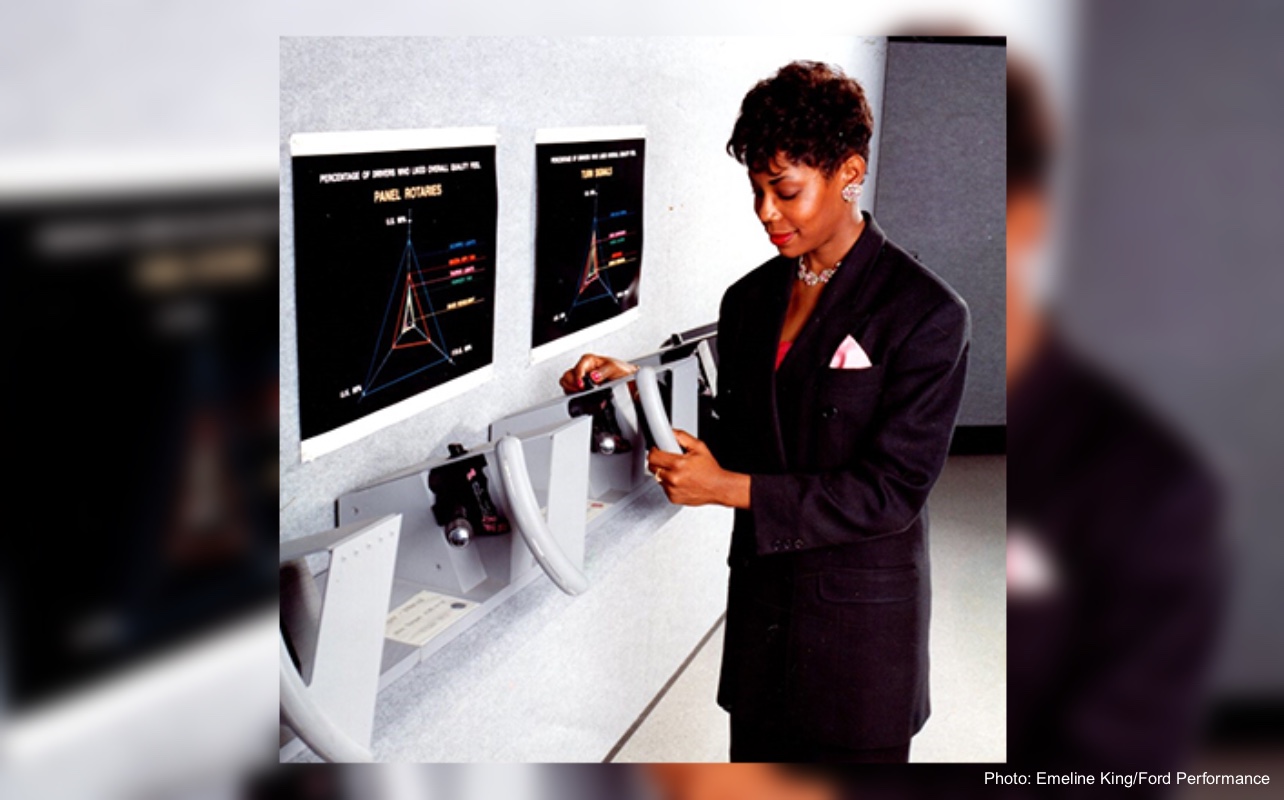
March 21, 2024
Meet Emeline King, Ford’s First Black Woman Designer
During her time as a transportation designer, King contributed to three assignments in Italy, Germany, and England.
A groundbreaking stride in automotive design was marked by Emeline King, Ford’s first African American female transportation designer, who crafted the interior of the iconic 1994 SN95 Ford Mustang.
Raised by a Ford plastic model specialist, King’s love affair with the Mustang blossomed at a tender age. She joined Ford Motor Company in 1983, according to Ford Performance. King’s illustrious nearly 25-year career at Ford extended beyond the 1994 Mustang’s interior design: the 1990 Ford Probe, 2000 Ford Thunderbird, and a patented 15-inch wheel cover for the 1989 Thunderbird.
During her time, she also contributed to three assignments for Italy, Germany, and England.
The Detroit native fell in love with the 1968 Ford Mustang at the age of 9 after her father took her to an auto show, where she was captivated by the Mustang’s shapes and forms.
“The 1994 Ford Mustang, with its striking two-tone, twin-arched dashboard-console and the doors that grow gracefully out of it like boughs from a tree, is largely the product of Emeline King’s designing eye,” the company noted.
King sad her father’s guidance fueled her dreams. “It was my first visit to my father’s work at the Ford Design Center that became the catalyst for me to want a career in transportation design,” she said. “Seeing how anxious I was, my father told me, ‘Emeline, you have to be a Ford employee and a transportation designer to have access into that studio.'”
Despite facing discouragement from her male instructors, King’s father introduced her to several African American male designers, modelers, and engineers who worked for Ford.
King also made contributions to other vehicle models: the 1989 Thunderbird interior components: 1989 Corporate Steering Wheel, 1989 Thunderbird Wheel/Wheel cover design program, 1990 Thunderbird Super Coupe, 1993 Mach III, 1994 Mustang, 1994 Mustang Official Pace Car Roll Bar/Graphics, 2000 Two-Seater Thunderbird and the 2004 Lincoln Aviator Interior Door Scuff Panel and Interior components.
After Ford let her go in 2008, King was encouraged by her father to share her trailblazing story.
She later transitioned to become an artist and author, penning an autobiography, “What Do You Mean A Black Girl Can’t Design Cars? She Did It!” The book delves into her journey as Ford’s first African American female transportation designer. “One of the most rewarding things about sharing my story is my new interaction with Ford and Mustang enthusiasts,” she told Ford Performance. “There’s satisfaction knowing that I helped design vehicles that were able to give them an experience of a lifetime.”